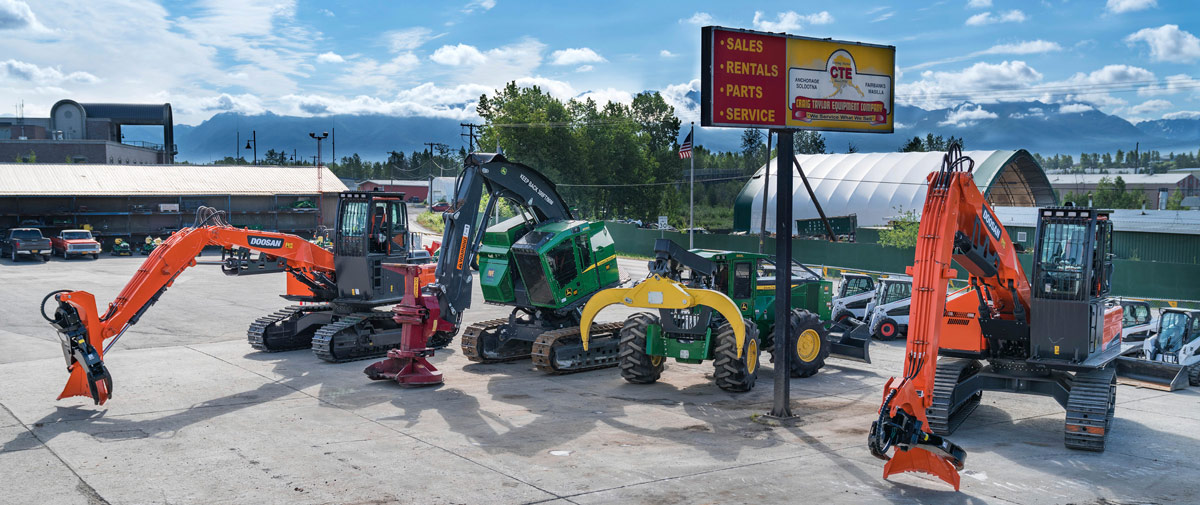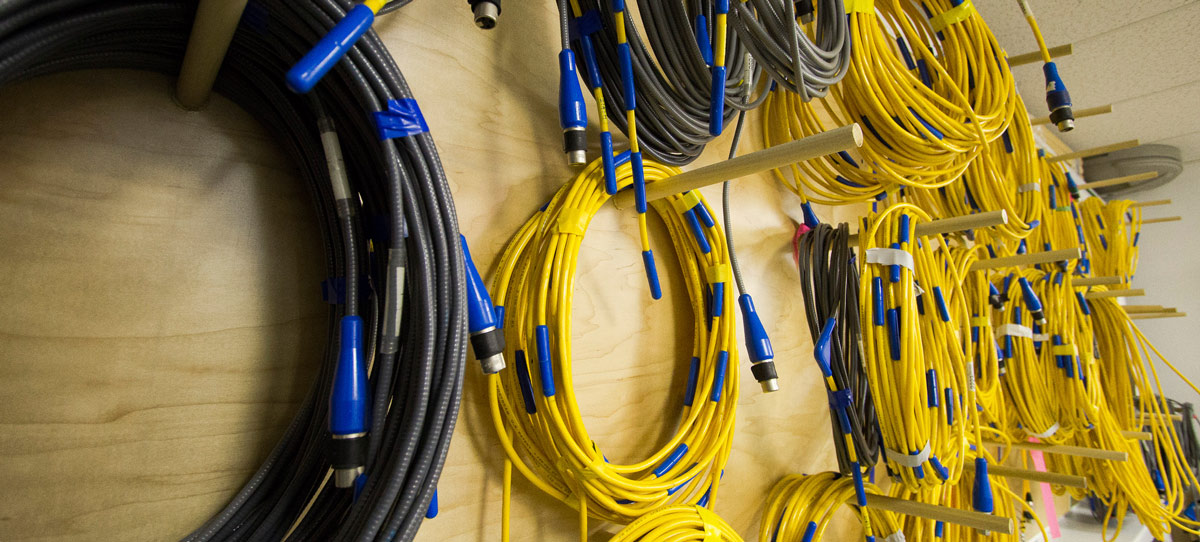

laskans cannot always drive to “the next town over” to pick up the tools they need. Location, production, service, and shipping factors complicate access to equipment and business technology. Therefore, planning for contingencies, keeping equipment on hand, and assessing what strategy works best—buying or renting—are keys to running smoothly.
Two companies, differently sized and positioned in separate markets, have shared insights about how customers can evaluate their best paths forward. Craig Taylor Equipment is a Top 49er that specializes in providing the heavy gear that clients need. Up-and-comer beadedstream deals in more high-tech gadgets yet serves the same role in supplying the means for customers to maximize their productivity. Both companies’ leaders guide their teams on how to help their customers decide what works best for them.
Chris Devine joined Craig Taylor Equipment in 2013 to assist in the generational transition after Sean McLaughlin purchased the business from the Taylor family, who founded the company. The two men got along well, and Devine was moved into the position of president and CEO and is a partial owner with McLaughlin.
“We are a full-service dealership that provides sales, rentals, parts, and service for all equipment lines we carry,” Devine says. “Anyone who owns a machine that we represent, whether they bought it from us or not, can come to us for parts or service support.”
Service is likewise included for the temperature sensor cables and remote data loggers sold by beadedstream, which designs and fabricates the hardware, too. The Anchorage-based company also offers machine learning software to help customers understand data and support decision making. Employees travel globally to sell, install, and maintain its products.
Brian Shumaker and his father founded beadedstream in 2004. Now it operates as an integration-focused company by adapting existing technology for field-specific applications. It is invested in serving rural communities and industry construction projects that need rapid monitoring of underground conditions, especially where permafrost exists.
“We provide a consultative sales process that starts by walking customers back to their original problem,” Shumaker says. For instance, customers might know they need to track ground temperatures but do not know what equipment to use or where to install it. In 2022, beadedstream sold, rented, and serviced 4,800 sensors, 60,000 feet of cable, and 100 data loggers.

Craig Taylor Equipment

“Our offerings are diverse—from businesses’ 100,000-pound excavators to homeowners’ basic lawnmowers,” Devine says. Craig Taylor Equipment’s customers must operate their own machines and possibly maintain them. So, Devine says, “they have to ask themselves, ‘What do I need to do?’ and, more importantly, ‘What equipment should I have on-hand to be efficient and productive?’”
At beadedstream, purchases and rentals work differently than at Craig Taylor Equipment. “Our equipment is basically hands-off once people know where to plant the sensors and plug them into loggers,” Shumaker explains. Its customers do not operate the equipment and, by having solar-powered parts, little maintenance is required while data flows via satellite to the cloud and apps.
Devine and Shumaker both note that equipment and technology generally become more expensive and complicated over time. “Some technology, like beadedstream’s, can be configured remotely as updates are needed, which can make offerings more affordable,” Shumaker says. These developments allow his customers to keep up with and apply innovations. However, Shumaker acknowledges that, in other areas of technology, staying current with the latest advancements or being able to pass maintenance responsibilities to owners “may be an argument to rent instead of buy.”
Renting contributes less than 5 percent of Craig Taylor Equipment’s revenue. “When deciding between buying or renting, you should consider your capacity to handle maintenance and repairs,” Devine says. “Customers who have the infrastructure and staff to maintain equipment and establish regular preventative maintenance programs to prepare for fix/fail situations often buy. Those who don’t may want to rent so they don’t have to factor those costs into their projects’ economics.” Having mechanics or service know-how also influences the decision.
Shumaker acknowledges that when someone owns equipment, especially machines that collect data, that person has full control of the information—which can be even more valuable than the equipment itself. “We’re seeing the future become more data-centric for decision making, and it’s an accelerating trend,” Shumaker says. “The more data you have, the faster and better you can make decisions.” Thus, owning does provide a competitive advantage.
“Think about the numbers—that’s what I encourage people to do. Since each project is different, we typically talk customers through them,” says Devine. “Does your project’s duration margin justify buying versus renting? Then we consider that information to help them make a good decision.”
No right answer exists. For instance, tax implications—which are unique to each person and business—can impact choices too.

beadedstream
Devine references telematics specifically, which can be the biggest hurdle for customers as technology evolves. “These systems help businesses be preventative and reduce downtime due to unexpected maintenance,” he says. Knowing how to harness, access, and interpret the collected data is critical for equipment users since it informs fleet management and operational decisions. While these technological advances drive up the price of equipment, in the long run it makes the machines more valuable because it saves time and money by preventing failure.
Shumaker approaches technology evolution from another angle. “Even my business has benefited from plugins and apps that connect our departments,” he says. These advancements help any size business work as if it were a large company with servers, clerical support, and IT departments. As businesses and individuals make investments in equipment and technology, understanding what these information systems offer and how to use them matters.
“The industry is moving very quickly in the technology direction,” says Devine. “Our customers are more accustomed to it, so less and less education is needed.” However, Craig Taylor Equipment’s sales representatives still walk each person through the digital screens and apps to identify settings, navigate menus, and program operating modes, such as economy, heavy-duty, or downhill. Once the user sets up their online portal, they have information at their fingertips.
“We see a future coming where people will go online and ask us a question like, ‘When can I drive on the ice road to Utqiaġvik?’” Shumaker says. “The answer is beginning to rely on—and will someday probably exclusively rely on—applying machine learning models. You can own all the machines in the world, but if they don’t get you where you need to go or do what you need them to do, then what’s their use?”